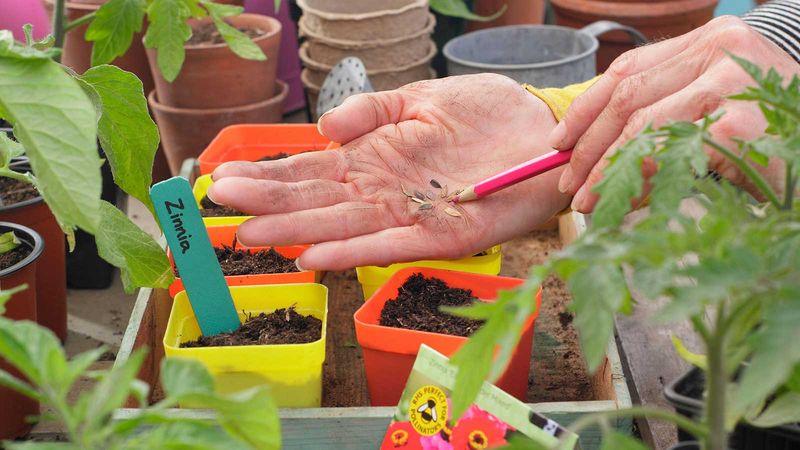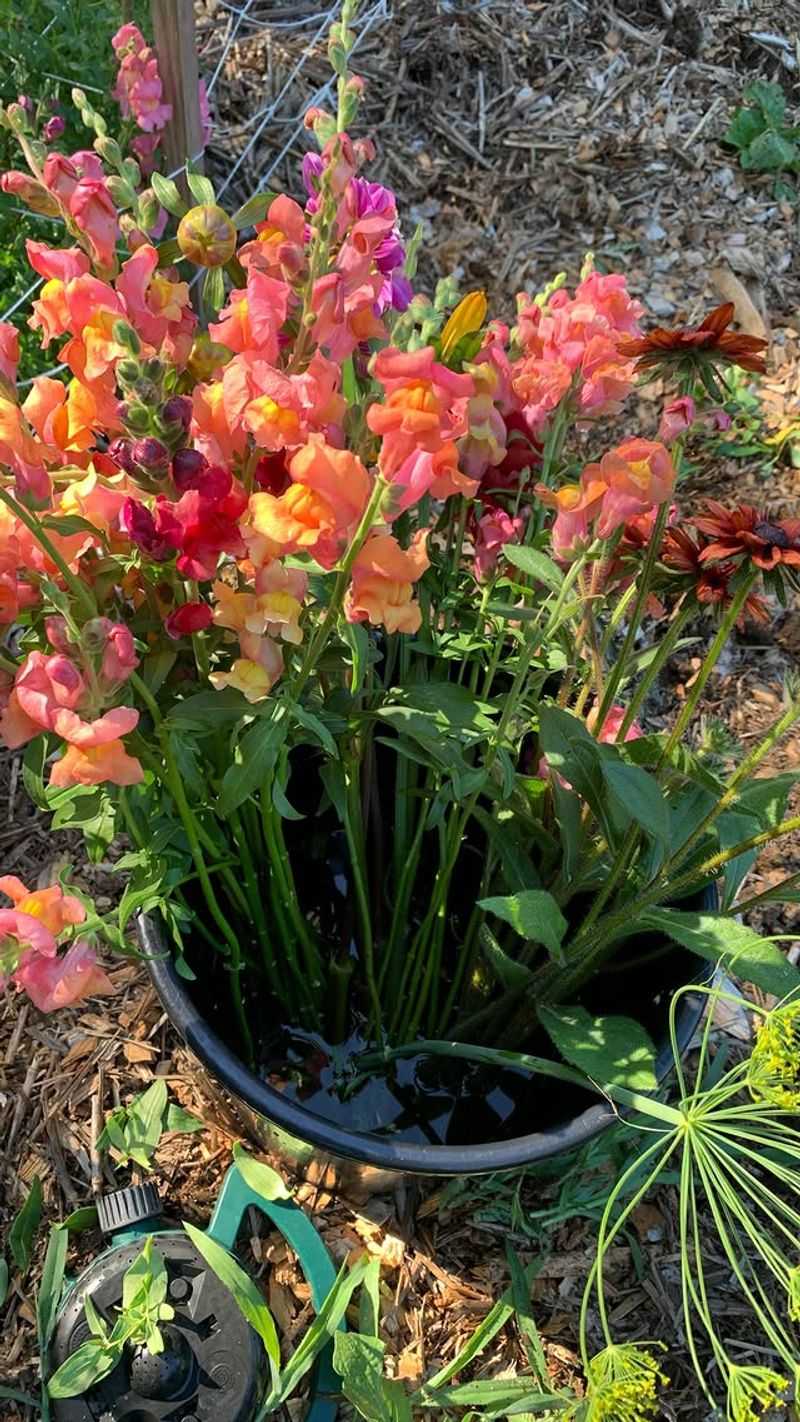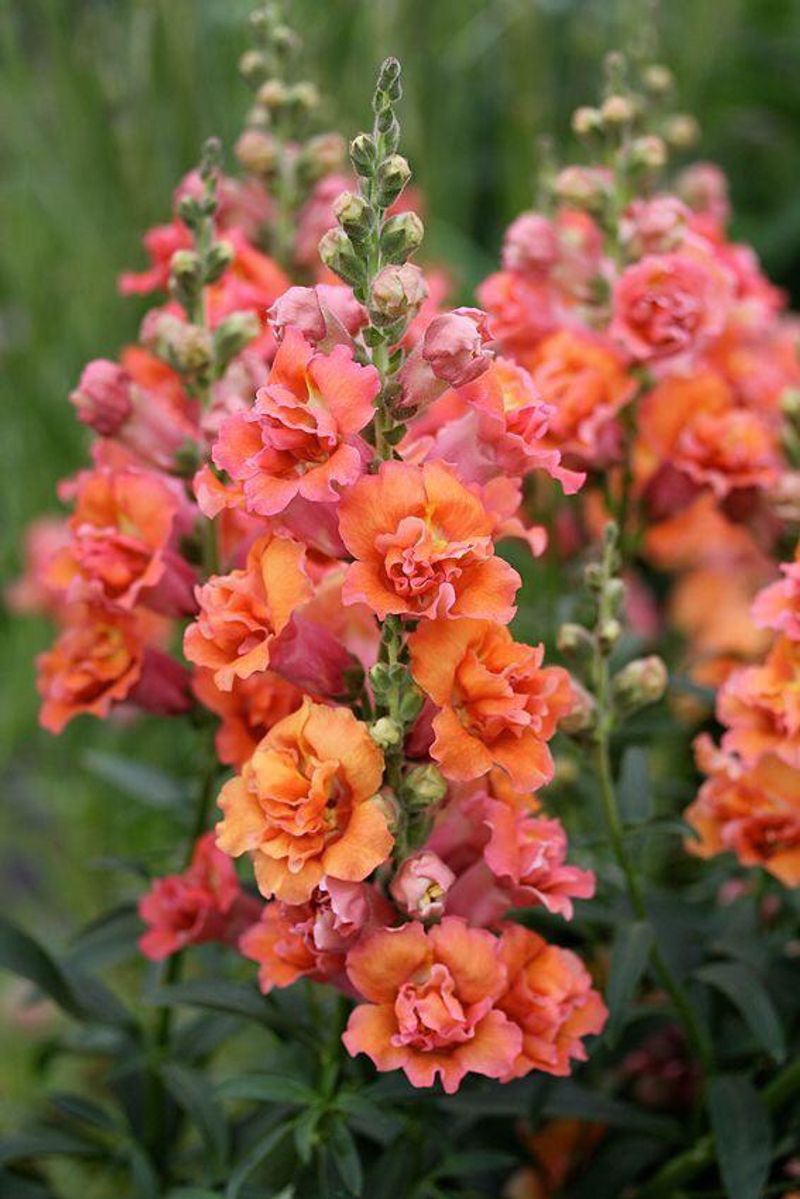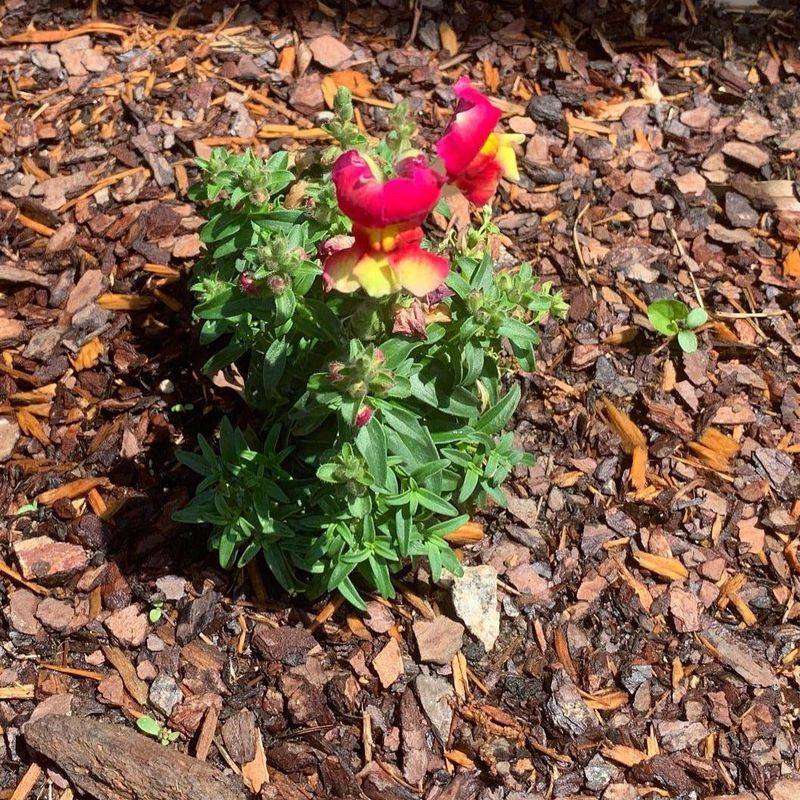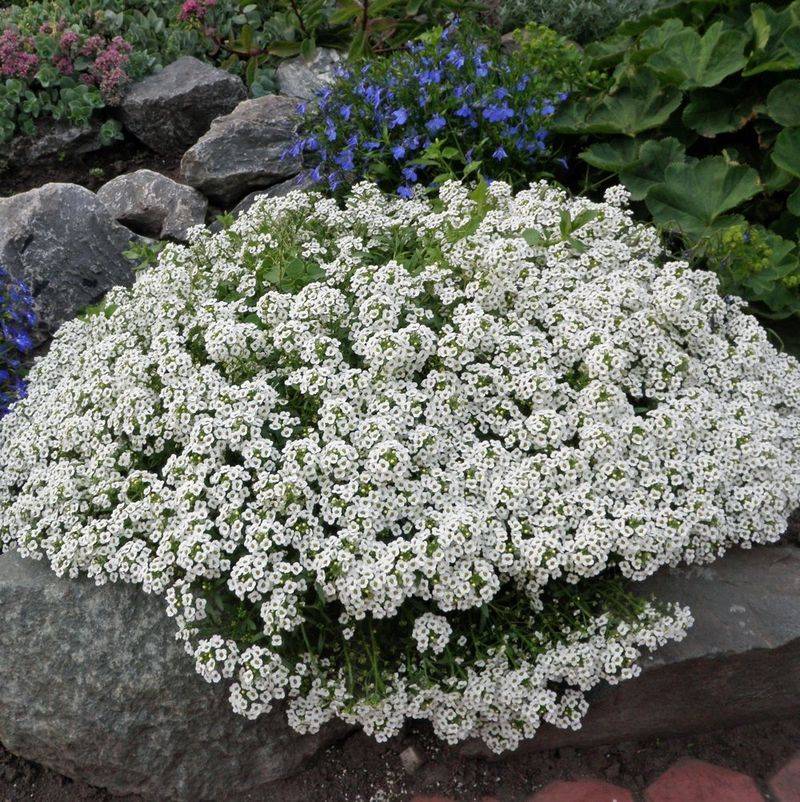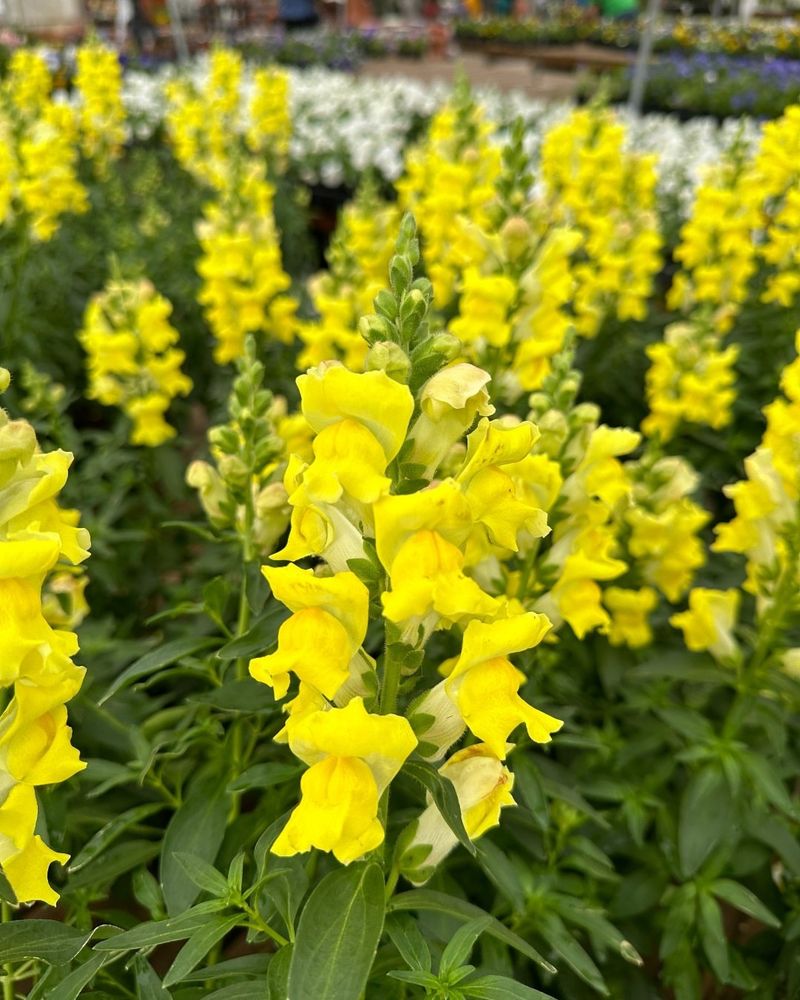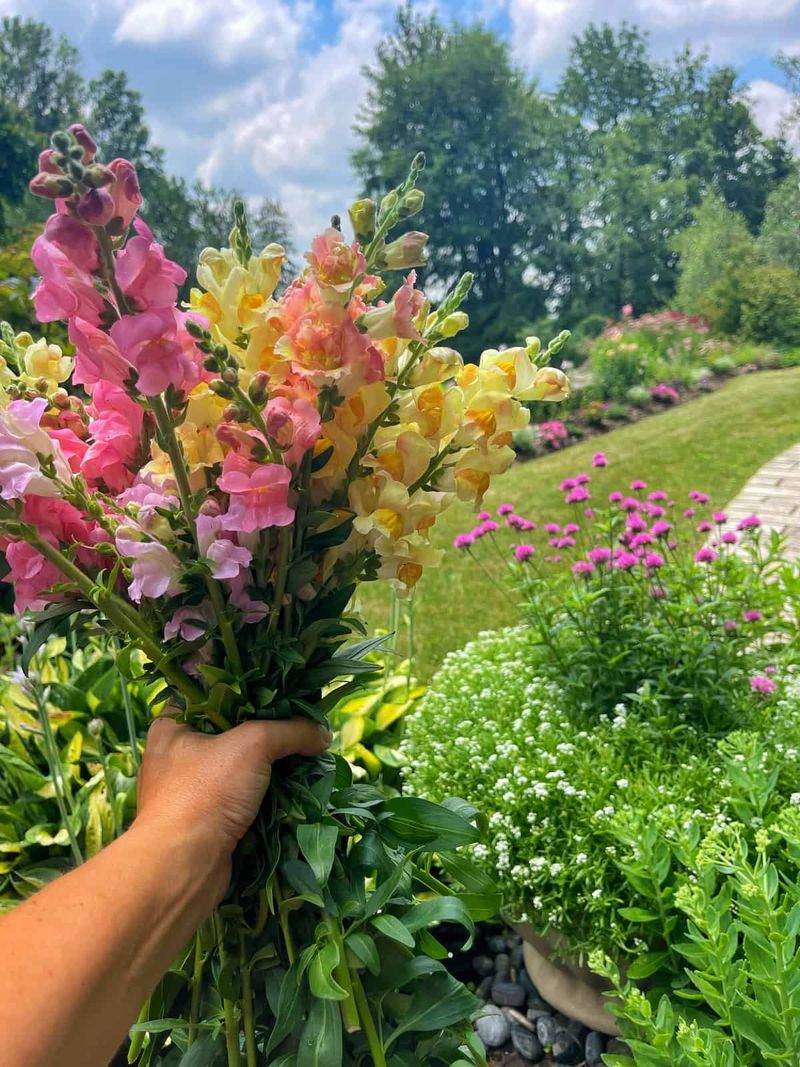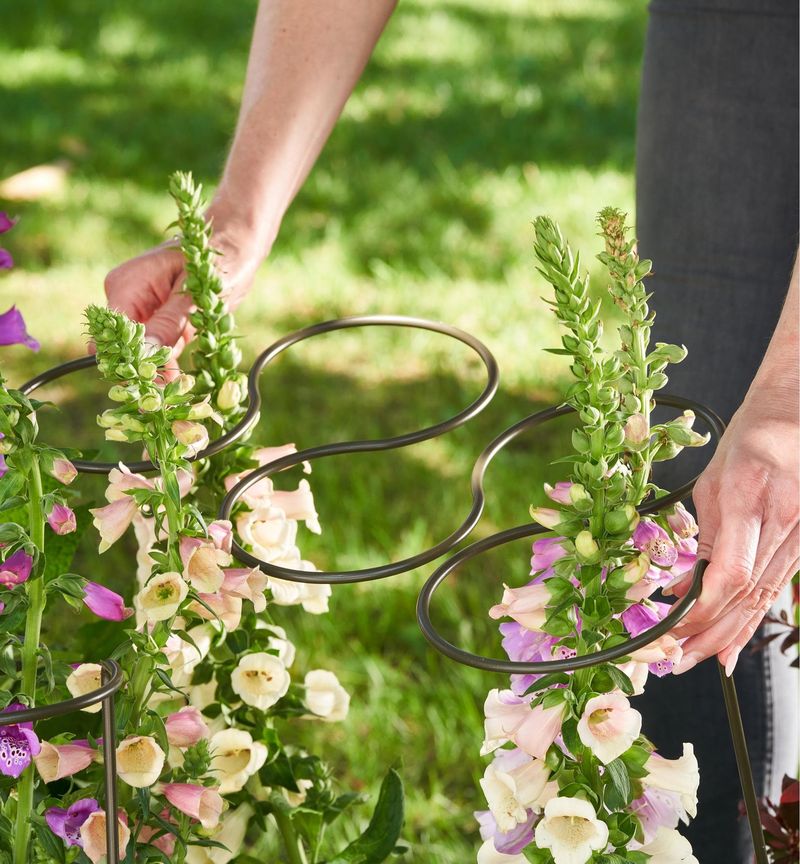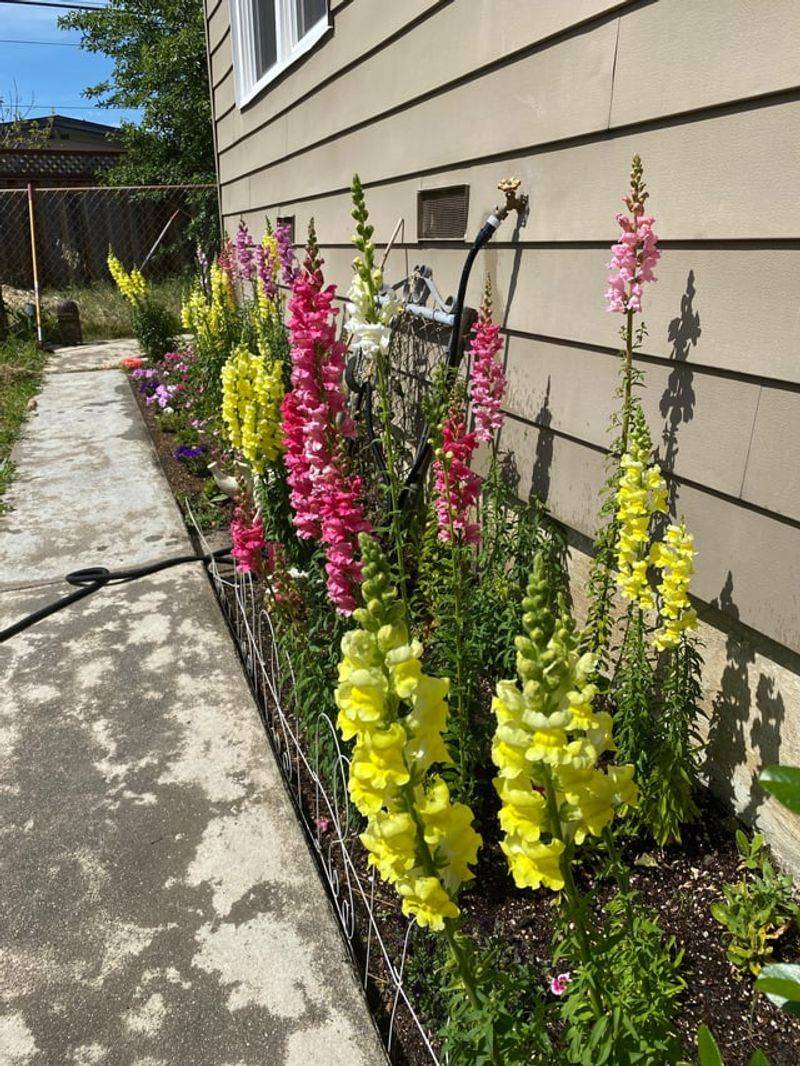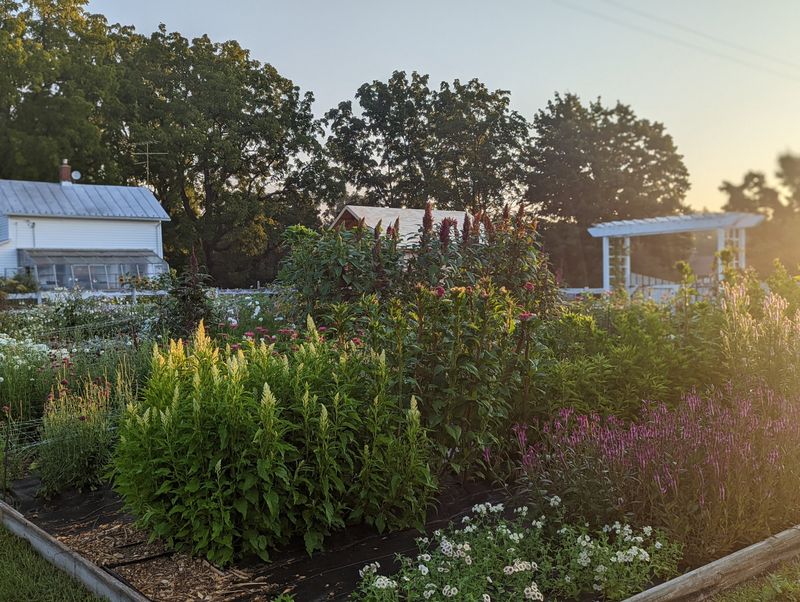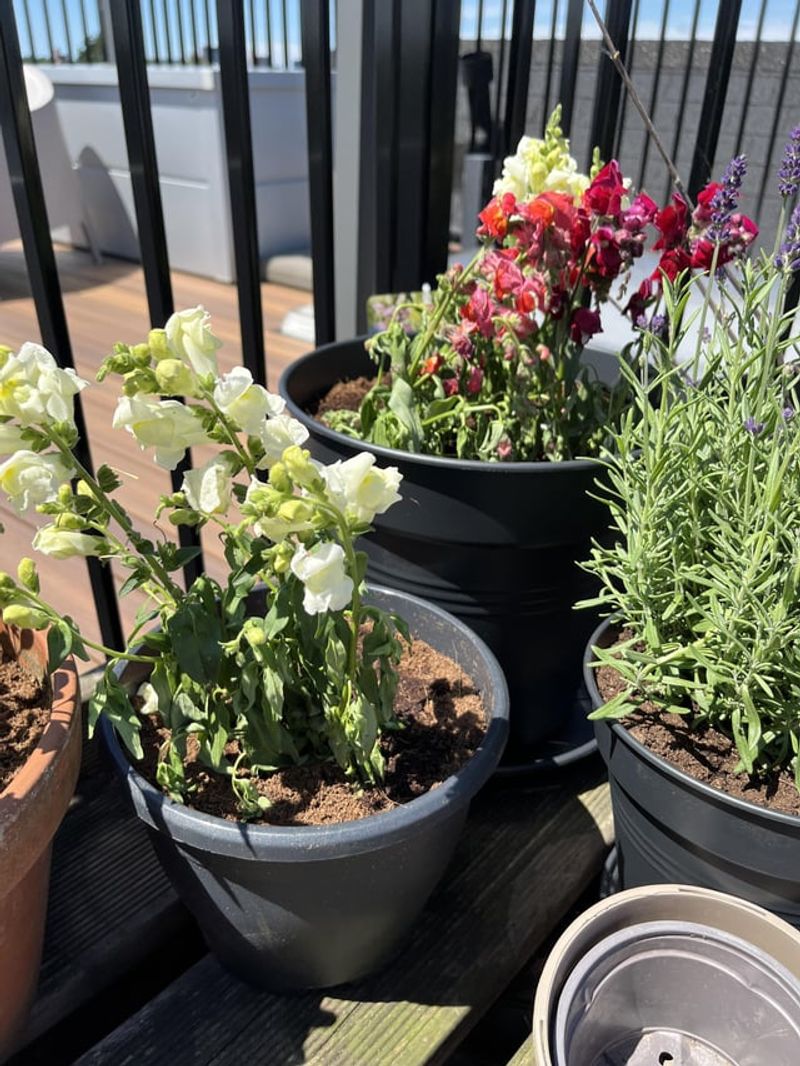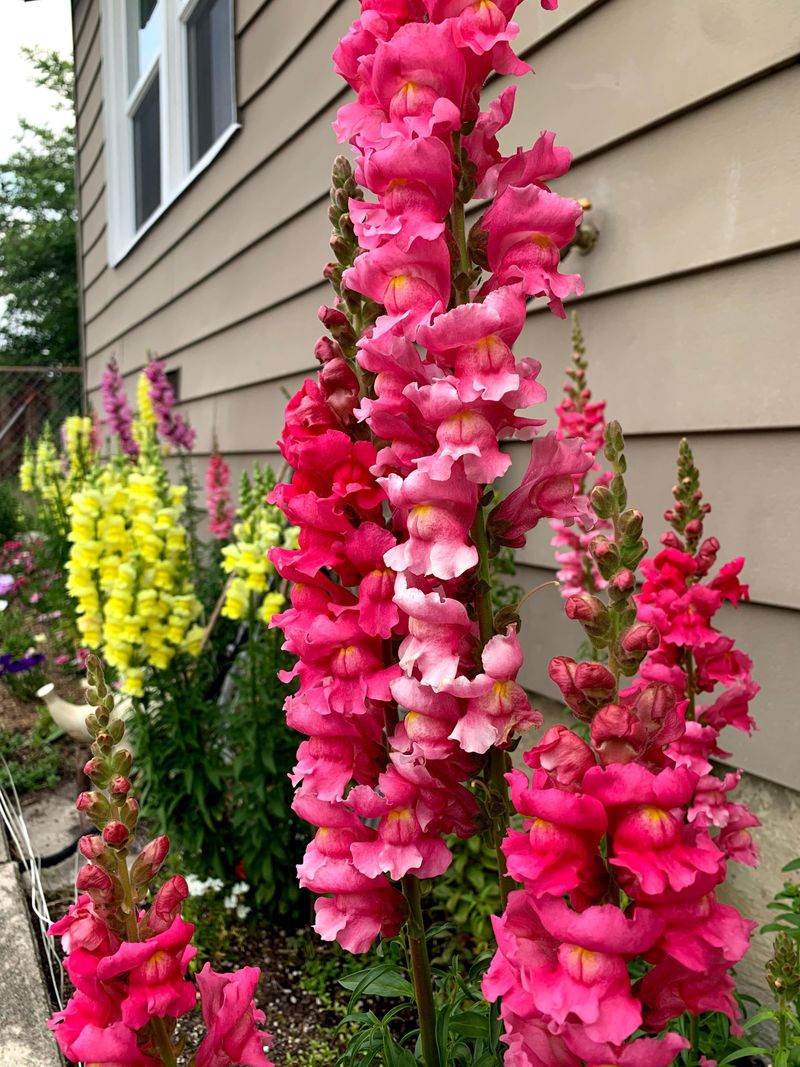A full, blooming snapdragon bed is one of those garden sights that just makes you stop and smile. I remember planting my first batch and wondering why they looked so sparse—even though I followed the instructions.
With a few simple adjustments, you can turn a patchy snapdragon setup into a garden showstopper. It’s all about spacing, timing, and a bit of early pinching to encourage bushier growth. Once I got the hang of it, my snapdragon beds became the most complimented part of my yard.
If you’re ready to take your snapdragon game to the next level, these tried-and-true tips will help you grow a garden that looks like it belongs in a magazine.
1. Start Seeds In Stages
Staggered planting creates continuous blooms throughout the season. I plant batches of snapdragon seeds 2-3 weeks apart, which ensures new flowers are always developing as older ones fade.
This approach prevents the dreaded mid-summer gap when everything blooms and then stops at once. For my zone 6 garden, I start the first batch indoors in February, the second in March, and direct-sow a final batch when soil warms.
The result looks intentional rather than spotty, with flowers at different heights and stages filling in all available space. My neighbors often ask how I maintain such consistent color from spring through fall.
2. Pinch For Bushier Growth
Nipping off the top growth when plants reach 6-8 inches tall completely transforms how snapdragons develop. The plants respond by sending out multiple side shoots instead of growing straight up, creating fuller-looking beds with more flower spikes.
I learned this technique after years of sparse gardens. Now I mark my calendar for pinching day about three weeks after transplanting. Using clean scissors or my fingernails, I remove just the top inch of growth.
One plant properly pinched can look as full as three unpinched plants. This simple step takes just seconds per plant but makes the difference between a thin garden and one that looks professionally designed.
3. Master Proper Spacing
Conventional spacing charts often suggest distances that create gaps between mature plants. For a garden that looks intentionally abundant, I plant snapdragons 6-8 inches apart rather than the recommended 10-12 inches.
The closer spacing means plants support each other as they grow, reducing flopping and creating that coveted cottage garden effect. This works especially well with varieties that reach similar heights.
My best results came when I arranged plants in triangular patterns rather than rows. The staggered arrangement eliminates visible bare soil between plants and creates a more natural-looking planting that mimics how flowers grow in the wild.
4. Layer Heights Strategically
Creating depth through height variation makes snapdragon gardens look fuller even with fewer plants. I plant taller varieties (30-36 inches) at the back or center, mid-sized types (18-24 inches) in the middle zone, and dwarf varieties (10-15 inches) at the edges.
This tiered approach allows you to see every flower while eliminating empty spaces. Last year, I mixed ‘Rocket’ snapdragons in the back, ‘Liberty’ in the middle, and ‘Floral Showers’ in front.
The layered design tricks the eye into seeing abundance. Even when plants are actually spaced properly for good air circulation, the overlapping visual effect creates the impression of a garden bursting with flowers.
5. Choose Complementary Colors
Color selection dramatically affects how full a garden appears. Groups of complementary colors create visual impact that makes plantings look more abundant than scattered rainbow arrangements.
My most successful bed paired deep burgundy, soft pink, and white snapdragons. The limited palette created a cohesive look that appeared intentional and full, while actually using fewer plants than my previous multi-colored attempts.
For smaller spaces, monochromatic schemes work wonders. A collection of snapdragons in varying shades of the same color family creates depth and interest without the choppy effect that comes from too many competing colors in a limited space.
6. Plant In Drifts Not Rows
Arranging snapdragons in natural-looking groupings or “drifts” instantly creates a more established garden appearance. I plant clusters of 5-7 plants of the same variety together rather than alternating colors or varieties in rows.
These drifts mimic how flowers grow in nature and draw the eye across the garden. After switching to this approach, visitors began asking how long my garden had been established, assuming it was years older than it actually was.
The technique works because our brains register each drift as a single unit rather than as individual plants with spaces between them. Even a new planting appears fuller and more mature when organized this way.
7. Incorporate Early Bloomers
Pairing snapdragons with early-flowering companions prevents the bare-looking stage while snapdragons are still developing. I interplant forget-me-nots, pansies, and alyssum that bloom while snapdragons are still growing.
These early performers fill the visual gaps and supply color during the establishment phase. As snapdragons mature and take over, the early bloomers naturally recede or can be removed without leaving holes.
My favorite combination includes yellow alyssum with emerging snapdragons. The low-growing alyssum creates a living mulch effect, suppressing weeds and cooling the soil while the snapdragons establish their root systems and gain height.
8. Add Trailing Companions
Introducing cascading plants along garden edges eliminates the hard line where snapdragon plantings stop. I tuck sweet alyssum, lobelia, and trailing verbena along the front of beds to soften edges and spill onto pathways.
The trailing effect disguises any gaps between upright snapdragons and creates a finished, thoughtful appearance. These companions also attract beneficial insects that help with pollination and pest control.
For container gardens, this principle works even better. Placing snapdragons in the center surrounded by trailing plants creates a full, professional-looking arrangement that hides the container edges and draws attention to the vertical flower spikes.
9. Feed For Continuous Blooms
Regular, measured feeding keeps snapdragons producing new flower spikes instead of petering out mid-season. I apply a balanced, water-soluble fertilizer diluted to half-strength every two weeks rather than occasional heavy feedings.
This steady nutrition approach prevents the feast-or-famine cycle that can lead to irregular growth and flowering gaps. For my sandy soil, I also incorporate slow-release organic fertilizer at planting time to provide baseline nutrition.
The feeding schedule makes a noticeable difference by July when unfed snapdragons typically slow down. My consistently-fed plants keep producing new spikes, maintaining the full appearance when many gardens start looking tired and sparse.
10. Deadhead Strategically
Removing spent flower spikes before they form seeds redirects the plant’s energy into producing new blooms. I check my garden twice weekly during peak season, carrying a small bucket for collecting the faded flowers.
The key is cutting just above a set of healthy leaves or a side shoot rather than removing only the spent flower itself. This strategic cutting stimulates branching at that point, creating a naturally fuller plant architecture.
Last summer, I experimented by deadheading only half my garden. The difference was striking – the maintained section continued flowering abundantly while the untouched section became increasingly sparse and leggy as plants focused on seed production.
11. Provide Support Systems
Taller snapdragon varieties often flop open from the center as they mature, creating gaps in what should be a solid planting. I install inconspicuous support systems when plants are about half their mature height.
Garden stakes with string grids work well for larger plantings. For smaller groupings, I place thin bamboo stakes around the perimeter and connect them with natural twine to create a corral effect that keeps plants upright.
Supporting the plants prevents the domino effect where one fallen stem takes down its neighbors. The supports quickly disappear from view as plants fill in, but the difference in garden fullness is remarkable compared to unsupported beds that splay open.
12. Create Backdrop Plantings
Installing taller plants behind snapdragons provides a visual anchor that makes the entire garden look more established. I plant evergreen shrubs or ornamental grasses as permanent backdrops for my snapdragon beds.
The solid green background makes snapdragon colors pop while hiding any bare spots that might develop. This layering technique borrows from theater set design, creating depth that makes the garden appear fuller than it actually is.
My most successful combination pairs snapdragons with compact boxwoods. The formal evergreens contrast beautifully with the cottage-garden feel of snapdragons, and their structure remains when snapdragons are between blooming cycles.
13. Mulch With Compost
Applying a thin layer of dark compost around plants creates an instant visual cohesion that makes gardens look more established. The rich color of compost provides contrast that makes flower colors stand out while visually connecting separate plants.
Beyond aesthetics, compost mulch improves soil structure and feeds beneficial microbes. I apply a half-inch layer in early spring and again mid-season, being careful to keep it away from direct contact with stems.
This approach serves double duty – it makes the garden look neater and more intentional immediately while slowly breaking down to feed plants throughout the season, supporting the robust growth needed for a truly full-looking display.
14. Practice Succession Cutting
Cutting back portions of established snapdragons at different times creates a continuous wave of fresh growth. I divide my garden into thirds and cut each section back by half its height at three-week intervals.
The first section I cut in early summer, just as flowering peaks. While it regrows, the other sections continue blooming. By the time the third section is cut, the first is producing fresh blooms again.
This rotation prevents the mid-summer slump when all plants exhaust themselves simultaneously. Instead of one spectacular show followed by decline, the garden maintains a consistent fullness with new growth constantly replacing tired stems.
15. Interplant With Fillers
Strategic companion planting with airy, cloud-like plants creates a cohesive look that disguises gaps between snapdragons. I weave baby’s breath, Ammi majus (false Queen Anne’s lace), and annual gypsophila throughout my snapdragon beds.
These filler plants have minimal footprints at soil level but create a unifying haze among the more structured snapdragon spikes. Their neutral white or pale blooms complement rather than compete with snapdragon colors.
When photographing my garden, these additions make all the difference. What might appear as separate plants in reality looks like one abundant, flowing planting in photos and from a distance, creating that magazine-worthy fullness many gardeners aim for.
16. Use Container Reinforcements
Placing containers of mature snapdragons within garden beds provides instant fullness in problem spots. I keep several containers growing as reinforcements, ready to drop into any area that starts looking sparse during the season.
Growing these backup plants in matching containers allows me to simply sink the entire pot into the garden when needed. The container rim stays hidden just below soil level, and garden mulch disguises the transition.
This rescue technique has saved many garden parties and photo opportunities. Guests never realize that the perfect-looking bed was enhanced just hours before with strategic container placement to fill gaps from plants that failed to thrive.
17. Extend The Season With Protection
Providing simple protection from early frosts extends snapdragon blooming by weeks, maintaining garden fullness when other plants have finished. I keep frost cloth ready by late summer to drape over plants on chilly nights.
Snapdragons can survive temperatures down to 28°F with proper covering. This extra effort keeps the garden looking abundant well into fall when many other flowering plants have already declined.
For spring plantings, I use the same cloths to protect newly transplanted snapdragons from late frosts. This head start allows plants to establish earlier, resulting in stronger root systems that support fuller growth throughout the main season.


